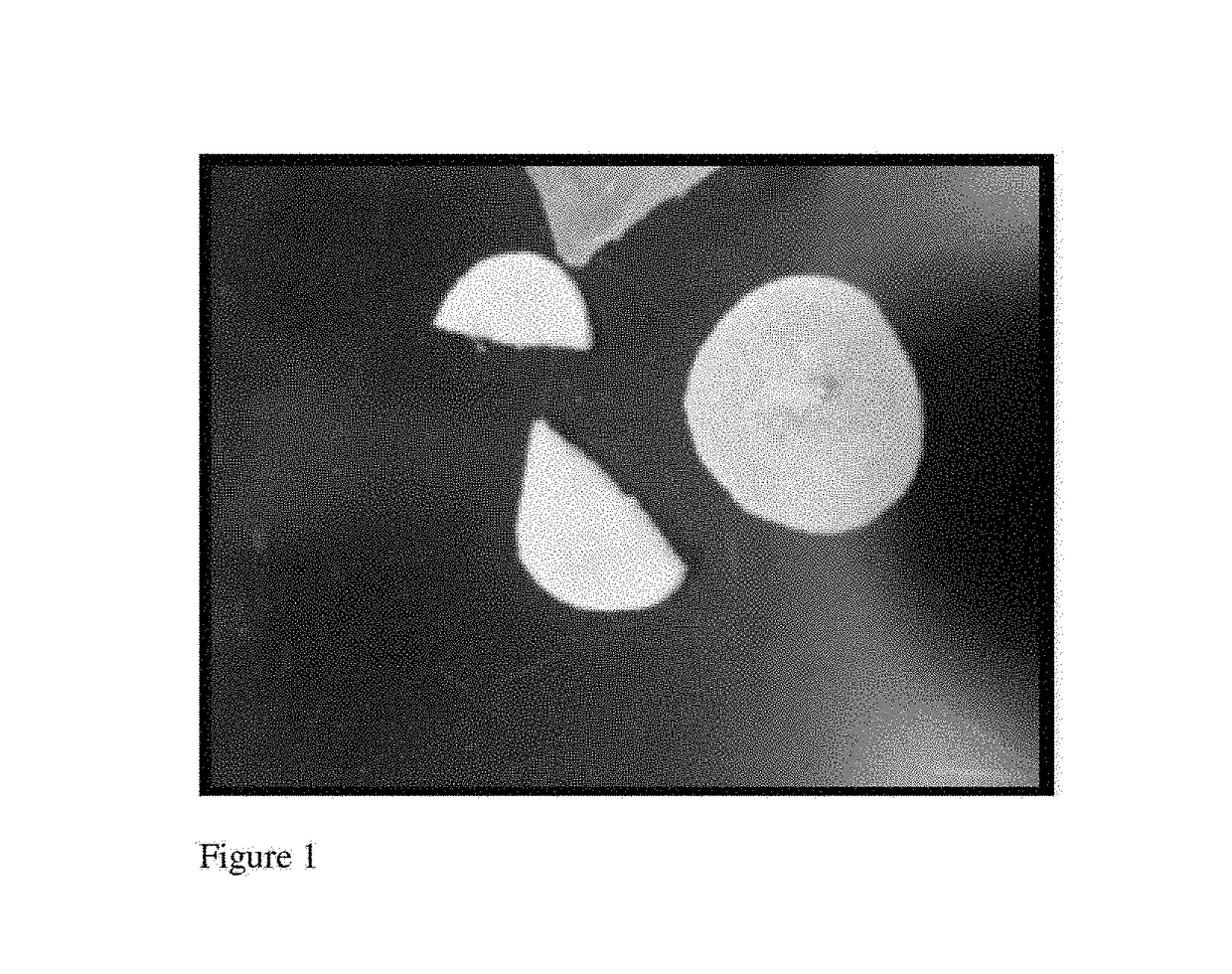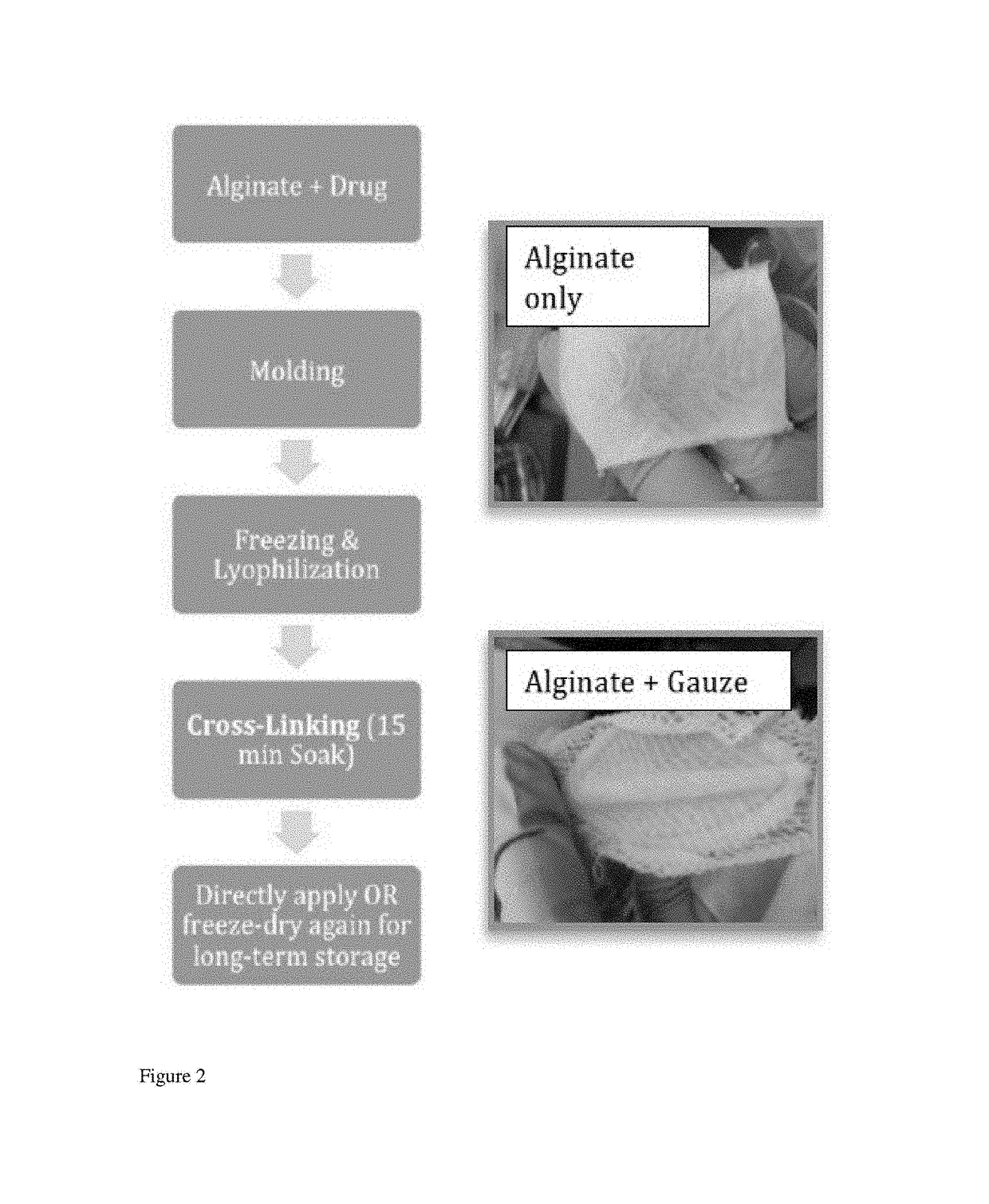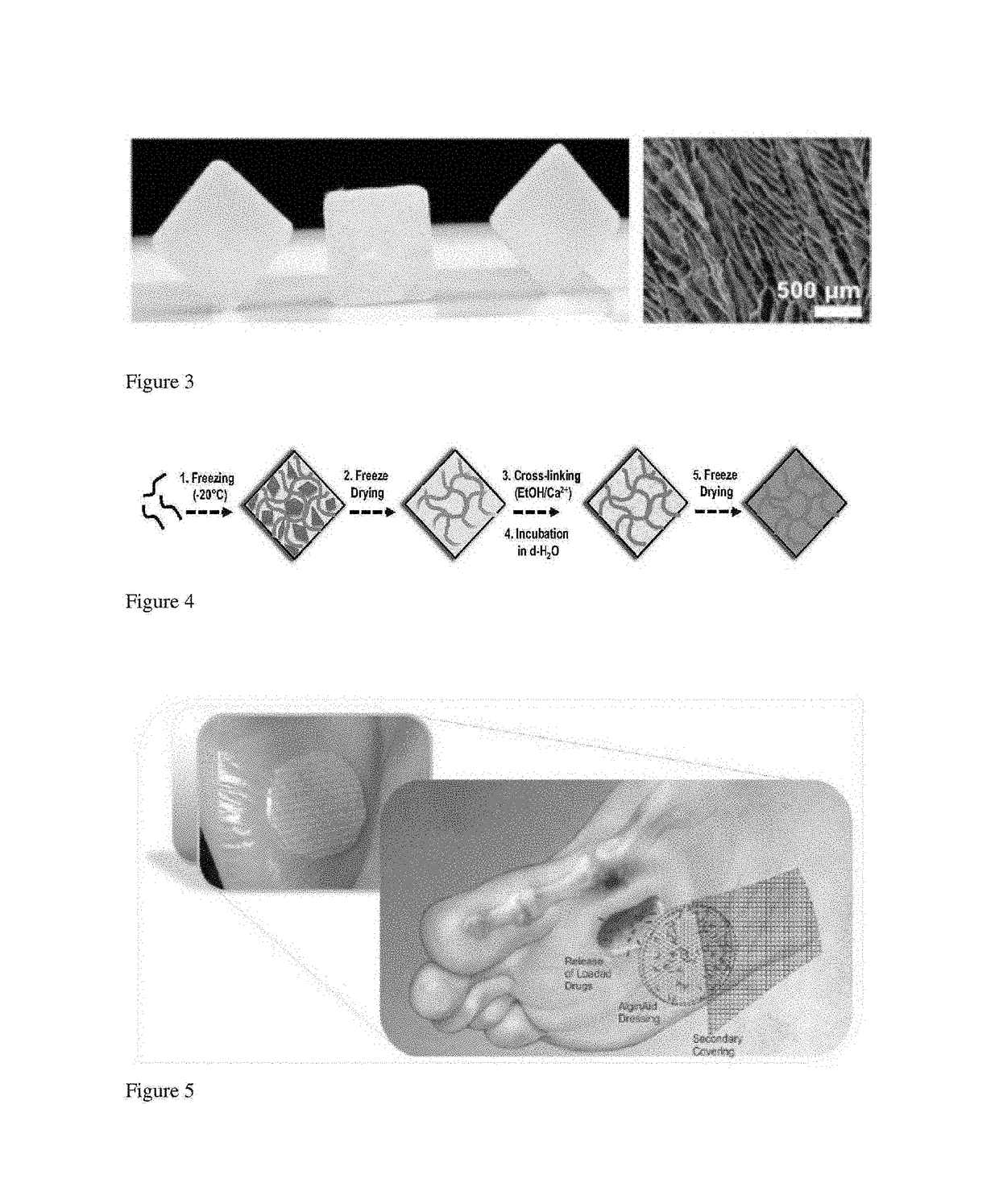Prefabricated alginate-drug bandages
a technology of prefabricated alginate and drug, applied in the field of wound dressings, can solve the problems of limited use of alginate dressing, inability to manufacture, incompatible with sensitive or labile drugs, cells or proteins that are prone to degradation under room temperature conditions, etc., and achieves the effects of reducing manufacturing costs, reducing manufacturing costs, and reducing manufacturing costs
- Summary
- Abstract
- Description
- Claims
- Application Information
AI Technical Summary
Benefits of technology
Problems solved by technology
Method used
Image
Examples
example 1
n of Exemplary Drug Eluting Bandages
[0076]Alginate is a preferred ionically crosslinked substance from which to fabricate bandages or wound dressings due to its ability maintain moisture at the tissue site and its generally non-adhesive properties (i.e., does not stick to wounds). To demonstrate this device, a high molecular weight (HMW) medical grade alginate (ProNova Biomedical (Norway), HMW MVG alginate) was used at 2% (w / v), 4% (w / v) solution. In this example, the alginate was medium viscosity (>200 mPas) sodium alginate where minimum 60% of the monomer units are guluronate (G / M ratio≥1.5), with molecular weight of >200 kDa. Alginate for fabrication of biomaterials is well known in the art, e.g., Augst et al., 2006, Macromol Biosci 6, 623-633, see e.g., FIG. 1a; contents of publication hereby incorporated by reference. Unoxidized alginate is preferred for fabrication. For drug delivery, non-derivitized alginate, i.e., without L-arginine, glycine, and L-aspartic acid. (RGD) modif...
example 2
udies
[0092]To test the device handling in a clinical setting, a rabbit study was performed with two rabbits. Diabetes was induced in the rabbits using alloxan and their blood glucose monitored and controlled. The central auricular artery and nerve were isolated and cut (neuroischemia) or left intact (sham). Four full thickness skin wounds were then created using a biopsy punch, and when bleeding had ceased, the wounds were filled with the prefabricated alginate bandages as shown in FIG. 12.
[0093]The reports back from the surgeons and animal care staff regarding the ability of the bandage to be applied, to stay in place, and to be easily removed were positive.
example 3
r Wound Healing Model
[0094]Experiments are performed to test the efficacy of the bandage in a neuroischemic and a neuroischemic+diabetes rabbit ear wound healing model using known methods, e.g., those described in Pradhan et al., J. Vasc. Surg. 2013, 58(3): 766-775, incorporated herein by reference. The bandages are tested alone; with Substance-P alone (32 μg); with VEGF alone (3 μg); or with a combination of VEGF and Substance-P. Bandages are exchanged every 3 days (a typical timeframe for cleaning) and the wound area examined at 10 days for % percent healing and histological analysis.
[0095]The described alginate sheet material hence has numerous applications as a wound dressing that maintains moist and non-traumatic healing environment and deliver therapeutic elements in a controlled manner. A highly absorptive alginate bandage with good handling properties that can control release of select drugs was developed utilizing a medical grade alginate, e.g., alginate that has FDA approv...
PUM
| Property | Measurement | Unit |
|---|---|---|
| temperature | aaaaa | aaaaa |
| temperature | aaaaa | aaaaa |
| Young's modulus | aaaaa | aaaaa |
Abstract
Description
Claims
Application Information
 Login to View More
Login to View More - R&D
- Intellectual Property
- Life Sciences
- Materials
- Tech Scout
- Unparalleled Data Quality
- Higher Quality Content
- 60% Fewer Hallucinations
Browse by: Latest US Patents, China's latest patents, Technical Efficacy Thesaurus, Application Domain, Technology Topic, Popular Technical Reports.
© 2025 PatSnap. All rights reserved.Legal|Privacy policy|Modern Slavery Act Transparency Statement|Sitemap|About US| Contact US: help@patsnap.com



